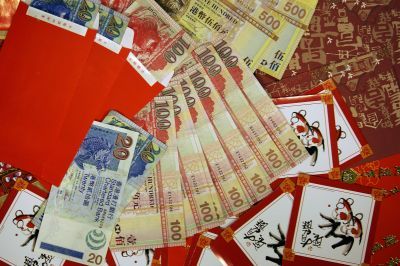Chinese New Year beckons -- and the cash starts to flow

Your support helps us to tell the story
From reproductive rights to climate change to Big Tech, The Independent is on the ground when the story is developing. Whether it's investigating the financials of Elon Musk's pro-Trump PAC or producing our latest documentary, 'The A Word', which shines a light on the American women fighting for reproductive rights, we know how important it is to parse out the facts from the messaging.
At such a critical moment in US history, we need reporters on the ground. Your donation allows us to keep sending journalists to speak to both sides of the story.
The Independent is trusted by Americans across the entire political spectrum. And unlike many other quality news outlets, we choose not to lock Americans out of our reporting and analysis with paywalls. We believe quality journalism should be available to everyone, paid for by those who can afford it.
Your support makes all the difference.It is the biggest event of the year for China's many millions -- and for those Chinese who have moved overseas too.
It is the biggest event of the year for China's many millions - and for those Chinese who have moved overseas too.
The Chinese New Year - which this year falls on February 14 and heralds in the Year of the Tiger - is a time for gathering with family and friends and it's a time for giving.
One of the many traditions at the heart of the occasion is the handing over of red "lai see'' envelopes of "lucky money'' to unmarried friends and family members. And the practice leads naturally not only to the production of millions of those packages but to millions of fresh notes to fill them.
The newer the money, so it goes, the better the luck it will bring and the Hong Kong Monetary Authority this week revealed it was pumping out around 200 million new notes, most of them the highly favoured HK$20 (€1.80) bills, just for the occasion.
All in all, that's about HK$4 billion (366 million euros) out there in this city alone, helping to spread New Year cheer.
It is commonly thought that in ancient times, families passed out coins strung together on a red chord but that the lai see packets became popular first because of the advent of printing presses and then because if you place a note inside one, it's harder for people to guess how much money has been given.
And it is not just family and friends that try to pass the luck around. Over the centuries this tradition has expanded too, with companies now sending the lucky red lai see packages to clients.
One of the region's largest financial institutions - the Bank of East Asia - estimates it hands out millions of the lai see packets (money, sadly, not included) to clients to help spread the good will - and of course the brand name.
A spokesperson from insurance company ING was quoted in the Hong Kong press saying the company had 150,000 packets onhand this year, printed with the company logo and in the company's trademark orange color.
They help "to promote our brand and [are] very well received among agents and clients. This turns out to be one of our most popular company souvenirs,'' the spokesperson told the South China Morning Post.
The Chinese public is being given February 13-19 off to celebrate New Year in 2010 and the event is at the centre of the 40-day Spring Festival, which traditionally sees the nations' millions of workers return home to their families.
MS
Join our commenting forum
Join thought-provoking conversations, follow other Independent readers and see their replies
Comments